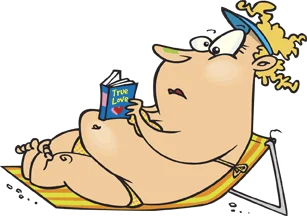Major Accounts
Bookkeeping Language

Major Types or Categories of Accounts
The types that are used to organize our financial information are Assets, Liabilities, Owner's Equity, Revenue, Expenses, and Draws.
All Detail Accounts are assigned to a Major Account Group or Type.
Well we used the term Account, so what is an Account ?
An Account is a separate record for each type of Asset, Liability, Owner’s Equity, Revenue, Expense, and Draw used to show the beginning balance and to record the increases and decreases for a period and the resulting ending balance at the end of the period.
Notice we used the term type. These categories are not the accounts but the account categories or groups that the Detailed Accounts are assigned to.
Don’t worry the next lesson defines and illustrates Detail Accounts.



A | L | OE | |||
| | Assets | | Liabilities | | Owner's Equity | |||
| | _____ | R | E | D | ||
| Revenue | Expense | Draws | |||
The above diagram is made up of two terms ALOE and RED. These are the basis for the acronym
ALOE-RED which helps us remember the major types of accounts. ALOE-represents Assets, Liabilities, and Owner's Equity. RED-represents Revenues, Expenses, and Draws/Dividends.
Associate these terms with a day at the beach when you get a RED sunburn and use ALOE (the ointment) to ease the pain.
Watch the Video for additional Help.
Account Major Types or Categories
Assets
Formal Definition:The properties used in the operation or investment activities of a business.
Informal Definition:All the good stuff a business has (anything with value). The goodies.
Additional Explanation:
The good stuff includes tangible and intangible stuff. Tangible stuff you can physically see and touch such as vehicles, equipment and buildings. Intangible stuff is like pieces of paper (sales invoices) representing loans to your customers where they promise to pay you later for your services or product. Examples of assets that many individuals have are cars, houses, boats,furniture, TV’s, and appliances. Some examples of business type assets are cash, accounts receivable, notes receivable, inventory, land, and equipment.
Liabilities
Formal Definition:Claims by creditors to the property (assets) of a business until they are paid.
Informal Definition:Other’s claims to the business’s good stuff. Amounts the business owes to others.
Additional Explanation:
Usually one of a business’s biggest liabilities (hopefully they are not past due) is to suppliers where a business has bought goods and services and charged them. This is similar to us going out and buying a TV and charging it on our credit card. Our credit card bill is a liability. Another good personal example is a home mortgage. Very few people actually own their own home. The bank has a claim against the home which is called a mortgage. This mortgage is another example of a personal liability. Some examples of business liabilities are accounts payable, notes payable, and mortgages payable.
Owner’s Equity also called Owner’s Capital
Comment: Both terms may be used interchangeably. In my tutorial lessons, I may refer to both terms or just use one or the other.
Formal Definition:The owner’s rights to the property (assets) of the business; also called proprietorship and net worth.
Informal Definition:What the business owes the owner. The good stuff left for the owner assuming all liabilities (amounts owed) have been paid.
Additional Explanation:
Owner’s Equity (Capital) represents the owner’s claim to the good stuff (assets). Most people are familiar with the term equity because it is so often used with lenders wanting to loan individuals money based on their home equity. Home equity can be thought of as the amount of money an owner would receive if he/she sold their house and paid off any mortgage (loan) on the property.
Revenues, expenses, investment, and draws are sub categories of owner's equity (capital). Think of owner's equity as a mom named Capital with four children to keep up with (I know she's only got one clinging to her leg but she left Expense, Investment, and Draws at home). The kids are named Revenue, Expense, Investment, and Draws and each kid has one job that they are responsible for in order to earn their allowance.

Kid Revenue is responsible for keeping track of increases in owner’s equity (Ma Capital) resulting from sales.
Kid Expense is responsible for keeping track of decreases in owner’s equity (Ma Capital) resulting from business operations.
Kid Draws has the job of keeping up with decreases in owner’s equity (Ma Capital) resulting from owner withdrawals for living expenses and other personal expenses.
And lastly, Kid Investment has the job of keeping up with increases in owner’s equity (Ma Capital) resulting from additional amounts invested in the business.
Revenue also called Income
Formal Definition:The gross increase in owner’s equity (capital) resulting from the operations
and other activities of the business.
Informal Definition:Amounts a business earns by selling services and products. Amounts billed to customers for services and/or products.
Additional Explanation:
Individuals can best relate by thinking of revenue as their earnings/wages they receive from their job. Most business revenue results from selling their products and/or services.
Expenses also called Cost
Formal Definition:Decrease in owner’s equity (capital) resulting from the cost of goods, fixed assets, and services and supplies consumed in the operations of a business.
Informal Definition:The costs of doing business. The stuff we used and had to pay for or charge to run our business.
Additional Explanation:
Some examples of personal expenses that most individuals are familiar with are utilities, phone, clothing, food, gasoline, and repairs. Some examples of business expenses are office supplies, salaries & wages, advertising, building rental, and utilities.
Owner’s Investments
Formal Definition:Increase in owner’s equity (capital) resulting from additional investments of cash and/or other property made by the owner.
Informal definition:Additional amounts, either cash or other property, that the owner puts in his business.
Additional Explanation:
Although these amounts can be kept up with as a separate item, they are usually recorded directly in the Owner’s Capital Account. In other words, immediately put into Ma Equity’s purse.
Owner’s Drawing
Formal Definition:Decrease in owner’s equity (capital) resulting from withdrawals made by the owner.
Informal definition:
Amounts the owner withdraws from his business for living and personal expenses.
Additional Explanation:
The owner of a sole proprietorship does not normally receive a “formal” pay check from the business, but just like most of the rest of us needs money to pay for his house, car, utilities, and groceries. An owner’s draw is used in order for the owner to receive money or other “goodies” from his business to take care of his personal bills.
Now, we'll move on to our Detail Types Of Accounts.

